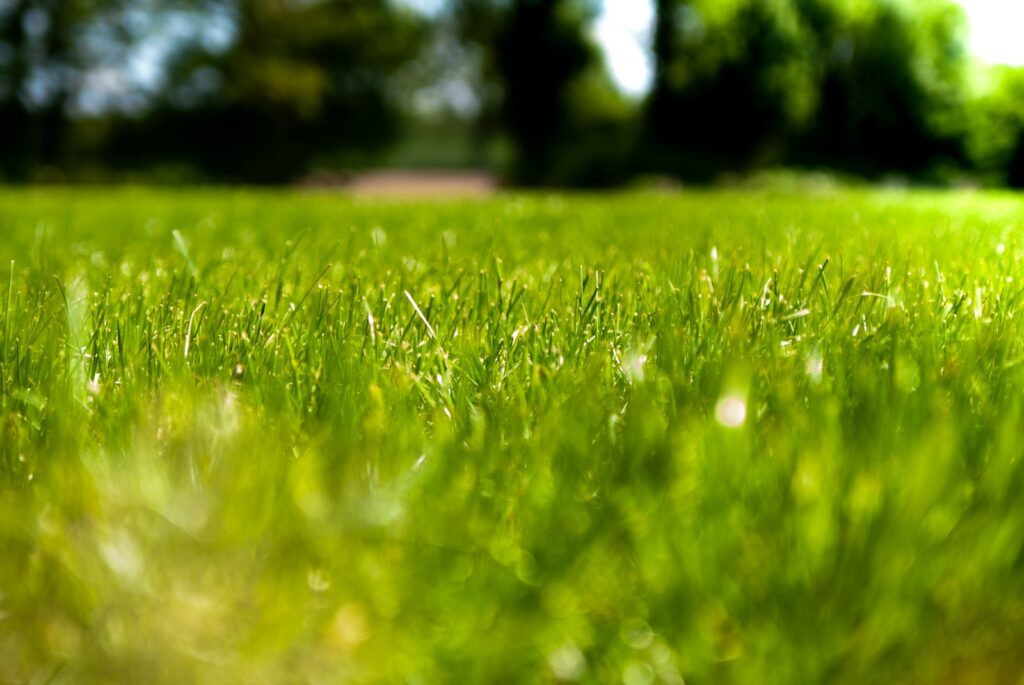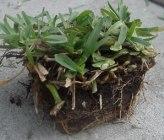Grass plugs are small sections of sod with established grass and roots that are used to start or repair lawns. Unlike grass seeds that require time to germinate and grow, or large rolls of sod that can be expensive and labor-intensive, grass plugs offer a convenient middle ground. They are individually planted units that quickly establish, spread, and integrate to form a dense, uniform lawn.
The benefits of using grass plugs include cost-effectiveness, ease of planting, and the ability to focus on specific problem areas without the need to re-turf an entire lawn. This makes them particularly advantageous for patching bare spots or establishing new grass varieties in an existing lawn. This guide will delve into the ins and outs of choosing, planting, and caring for grass plugs to ensure successful lawn establishment and maintenance.
Understanding grass plugs starts with recognizing their distinct advantages over seeds and sod. Plugs are less susceptible to the elements that can wash away or bury seeds and require less immediate care than sod. They are ideal for selective planting and offer a quicker establishment than seeding, without the immediate cost and labor of sodding. A variety of grass types are available as plugs, including popular choices like Bermuda, Zoysia, and St. Augustine, allowing for customization according to climate, soil, and personal preference. Grass plugs excel in scenarios where the lawn owner is looking to repair a damaged lawn, introduce a new grass type, or start a new lawn area altogether. They’re especially suitable for warm-season grasses that can be more challenging to establish from seed.
Selecting the Right Grass Plugs

What is already growing?
Matching grass plugs to existing species that are already growing in the lawn ensures a consistent look across your lawn, with uniform texture and color. A patchwork of different grasses can lead to a mismatched appearance, with sections that may differ in color or growth patterns. Each grass type has specific water, sunlight, and nutrient needs. By matching the plugs to the existing grass, you streamline your lawn care routine since all areas of your lawn will have the same requirements.
Grasses that are already thriving in your soil conditions are proven to be compatible, which can save you from the trial and error—and potential failure—of introducing an unknown variable.
Transplanting or Buying New Plugs
You may have the option of transplanting plugs of grass from a healthy part of your yard rather than buying new ones altogether.
- Purchasing new plugs can be advantageous for those seeking a quick and uniform solution; these commercially prepared plugs are typically robust, disease-free, and ready to thrive. This route offers convenience and a wide selection of grass types, particularly beneficial if you’re looking to introduce a new variety or don’t have enough healthy grass to harvest.
- When purchasing grass plugs, always check for the health and vitality of the product. Look for plugs that are green, robust, and free from pests and diseases. It’s also worthwhile to check customer reviews when ordering online to ensure that the supplier is reputable and that other buyers have had positive experiences with their products.
- Transplanting grass plugs from one area of your yard to another is a practical method for filling in bare spots or expanding your lawn’s coverage without incurring additional costs. This DIY approach involves carefully removing small sections of turf that are healthy and established, and replanting them in less vigorous areas. The key to success lies in ensuring that each plug has a good amount of soil and roots intact, which will help them quickly adapt and begin growing in their new location. Transplanting is also beneficial as it maintains a consistent look across your lawn since the grass type remains the same.
- Each method has its merits, and the decision should align with your budget, labor willingness, and the current state of your lawn.
Guide on Installing Grass Plugs
Preparation:
- The best time to install grass plugs is during the growing season for your grass type, usually spring or early summer for warm-season grasses and early fall for cool-season types. This timing helps the grass establish more quickly.
- Remove all existing weeds, debris, and any old grass in the area where you plan to install the plugs. Use a non-selective herbicide or manually remove unwanted vegetation a couple of weeks prior to planting.
- Conduct a soil test to determine pH and nutrient deficiencies. Amend your soil based on the test results to create optimal growing conditions. This might involve adding compost, soil conditioner, or specific nutrients.
- Water the area thoroughly a day before installing the plugs to ensure the soil is moist but not waterlogged, which makes planting easier and gives the plugs a good start.
Installation:
- Plan your layout beforehand. For coverage, grass plugs should be spaced according to the specific grass type’s spreading rate, generally 6-12 inches apart. Use a tape measure for precise spacing and mark the spots with a small dab of flour or spray paint.
- Use a bulb planter or a garden trowel to make holes just deep enough to accommodate the root ball of each plug. The hole should allow the plug to sit level with or slightly above the surrounding soil surface.
- Place each grass plug into its respective hole, ensuring that the top of the plug is level with the soil surface. Fill any gaps around the plug with soil and press down firmly to eliminate air pockets and ensure good contact with the soil.
- Water the plugs generously immediately after planting to help settle the soil around the roots and provide necessary moisture for initial growth.
Aftercare:
- Keep the soil consistently moist but not soggy during the first few weeks until the plugs are established. This may require watering once or twice a day depending on weather conditions. Reduce watering frequency as the plugs begin to grow and root deeper into the soil.
- About four to six weeks after planting, apply a light application of a balanced, slow-release fertilizer to promote healthy growth. Avoid heavy fertilization which can burn young grass.
- Wait to mow the new grass with a large mower until the plugs are set. Use a sharp blade to ensure clean cuts and avoid pulling up the plugs. If you want to maintain the height, its okay to use sheers.
- Keep an eye out for weeds and remove them manually or use a selective herbicide that is safe for the type of grass you’ve planted. Avoid broad-spectrum herbicides until the plugs are fully established.
- Regularly inspect the newly planted area for signs of distress, such as browning leaves or patches. Address issues promptly to ensure healthy growth.
Here is a great video on installing grass plugs using a similar method to what we described here:
Conclusion
Grass plugs offer an effective and practical solution for establishing or repairing a lawn, blending the best aspects of seeding and sodding without the extremes of either method. As small, pre-grown sections of turf, they provide immediate structure to your lawn, with roots ready to take hold, which accelerates the growth process compared to seeds. Unlike large sod rolls, grass plugs are less expensive and labor-intensive, making them an accessible option for homeowners looking to address specific areas without the commitment to extensive sodding. This guide has explored the nuances of selecting, installing, and caring for grass plugs, providing a comprehensive approach to achieving a lush, healthy lawn.
By understanding how to properly install and maintain grass plugs, homeowners can effectively cultivate a vibrant lawn that seamlessly integrates with the existing landscape. Whether you choose to transplant plugs from a healthy part of your yard or purchase new ones, the flexibility and cost-effectiveness of grass plugs make them an appealing choice for lawn care. Remember, the success of grass plugs depends on proper preparation, installation, and aftercare. Regular monitoring and maintenance will ensure that your effort results in a thriving lawn that enhances your outdoor space.

